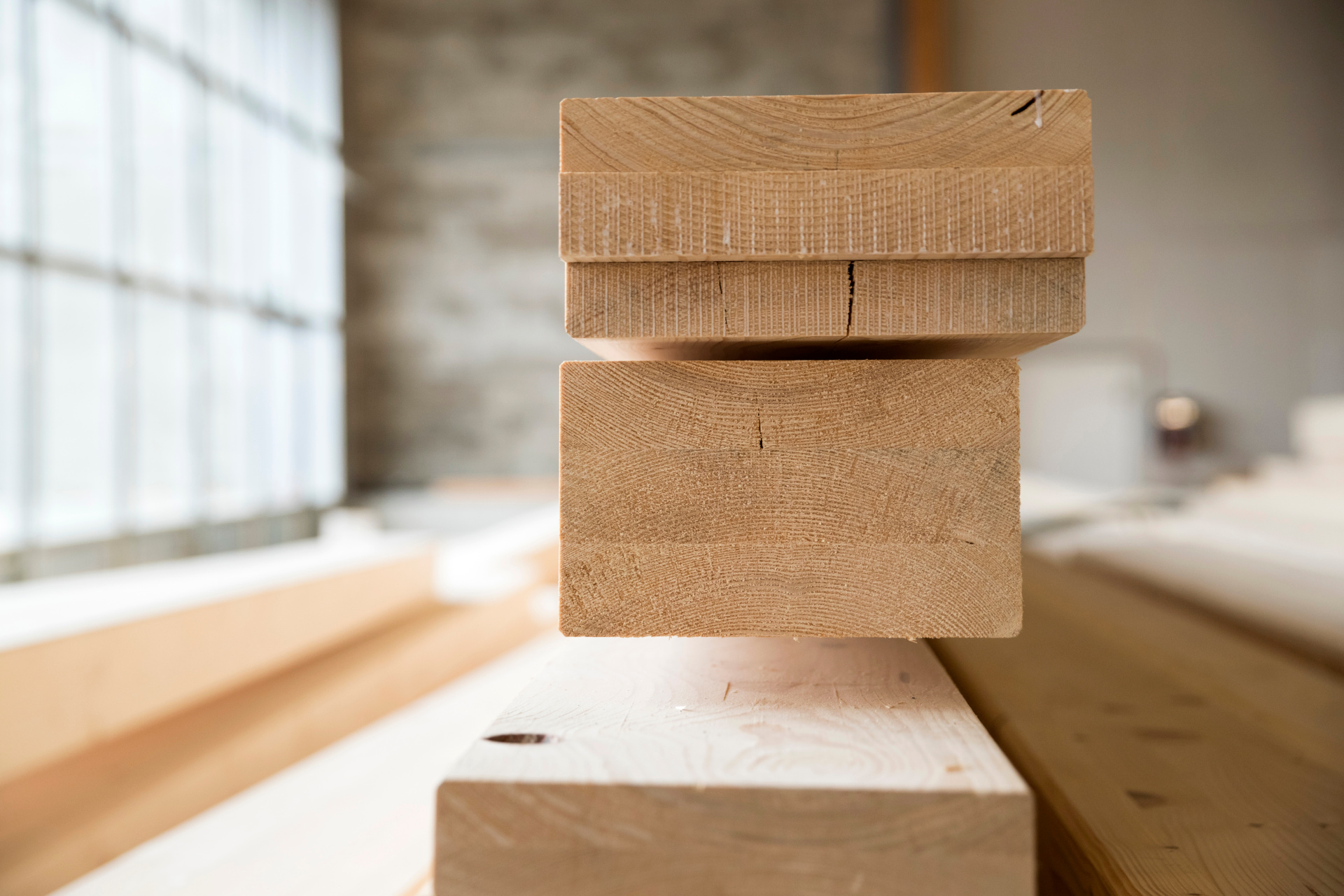
Wood species and their use
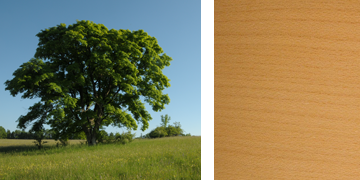
Maple
Light-coloured wood is obtained from maple, which varies in colour from almost white to light brown with a reddish tinge (yellowish in sycamore maple). The grain of European maple is fine and uniform; however, bird's eyes and special patterns also occur. Maple darkens quickly in the sun. Maple is often used for floors, furniture, veneers, kitchens and tables.
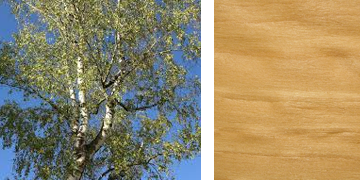
Birch
As expected, the wood of the birch is light-coloured and usually has a reddish-yellow note. The wood is weakly grained; however, the flame or ice birch forms flame-like or even ice flower-like drawings that produce interesting grains. Birch is widely used, especially in Scandinavian countries. Birch is mainly used in parquet flooring, as veneer or as wood for furniture making.
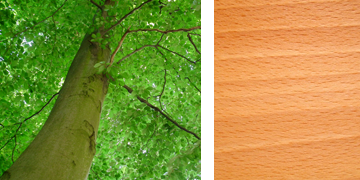
Beech
Beech wood is light, yellowish or reddish – older trees often have a reddish-brown colour core. Beech wood is only slightly textured. Beech is the most common deciduous tree in Europe. It is no wonder that beech is one of the most important commercial woods in our latitudes. Beech is hard, elastic, dense and strong – similar to oak wood. Accordingly, the wood is widely used, for example for floors, furniture, veneers and for heavily stressed building components.
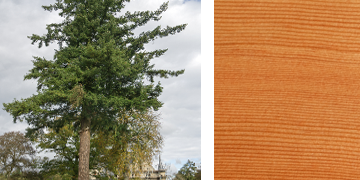
Douglas fir
Originally from North America, the coniferous wood has a light-coloured spint and a yellowish to reddish-brown heartwood that darkens considerably with time. It greys out quickly in the weather. Douglas fir is soft, tough and strong. It has a good load-bearing capacity and is almost unaffected by the weather. This is why it is popular for outdoor use and shipbuilding, but is also used as veneer wood, in floors and panelling.

Oak
The hard, yellowish-brown wood is the classic among the hardwoods. Oak stands for hardness, weather resistance and resilience. In addition, the wood is amazingly elastic. Oak wood is beautifully grained, the annual rings are clearly visible. The wood is widely used for floors, panelling, furniture, veneers, constructions - in other words, practically everywhere indoors and outdoors.
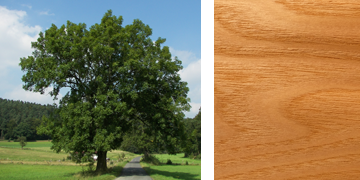
Ash
The sapwood and heartwood of ash are light, white-yellowish or reddish. Ash wood, like oak wood, is cloudy and irregularly striped. Ash wood is more tensile, more resistant to bending and tougher than most other domestic wood species; on the other hand, it is not very weather-resistant and is therefore used almost exclusively indoors for floors, furniture, panelling and veneers.
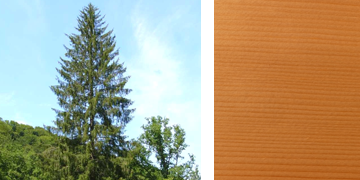
Spruce
The spruce or Norway spruce produces a soft, non-weather-resistant wood in shiny red tones. The annual rings are clearly visible; the wood has a mostly finely striped grain, which is broken by conspicuous knotholes. Typical of spruce wood are the conspicuous resin channels that run through the wood. Spruce wood is very soft and has a very low density. However, its mechanical properties are surprisingly good, which is why spruce wood is often used as building and construction timber. Spruce wood is also used for floors, furniture and veneers.
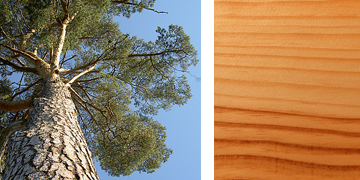
Pine
The heartwood of the pine is noticeably darker than the yellowish-white sapwood. The wood is visibly grained, knotholes are also clearly visible. Pine wood is medium-weight and has good mechanical properties compared to spruce. Nevertheless, pine wood is also not suitable for outdoor use without further ado; it is suitable for building furniture or as construction timber.
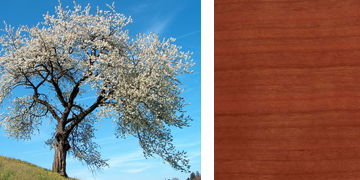
Cherry
The medium-weight cherry wood differs relatively strongly in colour between sapwood and heartwood. The sapwood is yellowish-white and the heartwood yellowish-reddish to reddish-brown. Cherry wood is easy to work and polish. These properties and the warm colour make cherry wood a precious wood that is primarily used in interiors: Fine floors, panelling, furniture, veneers and decorations are made with cherry wood - or in combination with it.
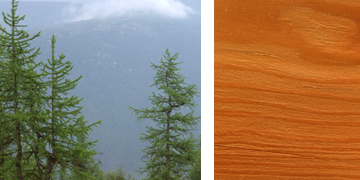
Larch
The colour of the heartwood and sapwood differs markedly in the larch, with the heartwood being significantly darker than the light yellow to reddish outer area. The heartwood also contains nail lobes, small dark knots that have grown into the wood. Larch wood is the strongest and heaviest coniferous wood and is therefore very strong. It can also be used well outdoors as long as there is no contact with the ground. Larch wood is often used for constructions in the building industry; doors, gates, window and façade cladding are also often made of larch wood. The larch-lined Älplerstuben, which are familiar from the mountain regions, exude their very own charm and a homely scent.
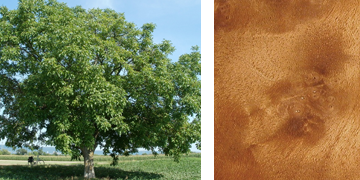
Walnut
The wood of the walnut tree captivates with its typical squiggly pattern. The colours vary from light to dark brown to almost black. Walnut wood is sometimes called the most noble of the native woods. Accordingly, it is used to make fine floors, sophisticated furniture, veneers, panelling and doors.
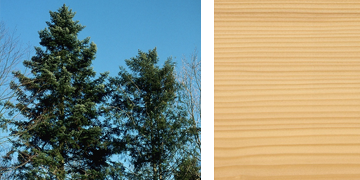
White fir
The matt fir wood is yellowish or reddish white throughout. The wood is clearly grained like stripes. The grain is regularly broken by clearly visible knotholes. The wood of the white fir is used in the building sector; however, it is also used to make fibreboard, veneer, boxes, poles, furniture and pallets.
Sources: Wikipedia, schoenesleben.ch


